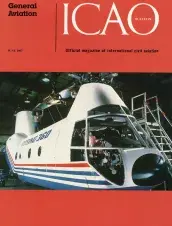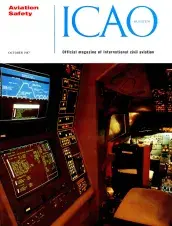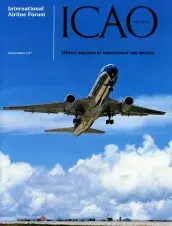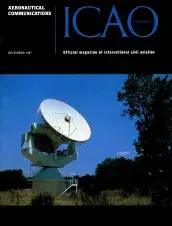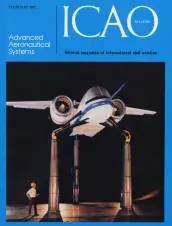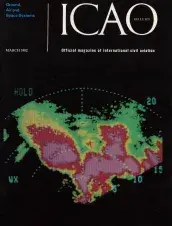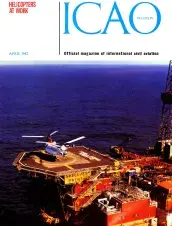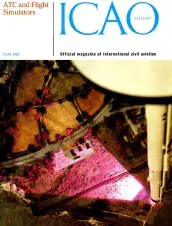ICAO Journal
The objective of the Journal is to provide a concise account of the activities of the International Civil Aviation Organization and to feature additional information of interest to Contracting States and the international aeronautical world.
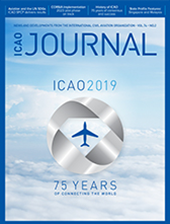 (ICAO Journal is available in English only from 2013)
(ICAO Journal is available in English only from 2013)
Rollout of the Boeing Vertol Model 360 helicopter took place last April; first flight of the 370-km/h (cruise) aircraft is planned shortly. Employing extensive use of composite structural materials, it is powered by Twin Avco-Lycoming AL5512 engines. It also features a "glass" cockpit designed and produced by Allied Bendix Aerospace Corp. The 15.5-metre long helicopter has a design gross mass of 13,835 kilograms.
This month, we consider various aspects of air-cargo operations, including a report on how Boeing 707s are enjoying life extensions by means of modern renovation. Both cargo and passenger configurations are available (see pages 25-27). Here, we see another cargo aeroplane update — the second McDonnell Douglas DC8-55F placed in operation this year by Air Charter Services (ACS) of Farnham, Qudbec. Equipped with Quiet Nacelle Corporation's hush kit, the resulting lowered engine noise levels will permit operations well into the 1990s, according to this Canadian freight/livestock carrier.
A Horizon Air regional airliner is shown taking part in recent evaluation tests of a newly installed Wilcox microwave landing system. Located at Friedman Memorial Airport at Hailey, Idaho, in the United States, the MLS provided classic challenges with respect to siting, installation and operations.
This is the first of three B-737-300 flight simulators, manufactured by CAE Electronics for Boeing, which is equipped with a "Microburst Analytical Atmospheric Simulation Software Model." This permits simulation of six different microburst downdraughts. With a built-in multi-variation capability, the software model permits the flight crew instructor to relocate, distort and vary the intensity of downdraughts, which enables trainees to experience the most accurate impacts of low level wind shears on an aircraft at the critical take-off and landing phases of flight. The instructor station is on the left.
This Boeing 767-200, in Varig Airlines colours, is shown on ascent during certification testing at La Paz, Bolivia, which was completed in late February. At 13,358 feet (4,071 metres) altitude, La Paz is the highest commercial airport in the world. Tests included take-offs, landings and ground operations, such as the start-up of engines and the auxiliary power unit. Varig procured six extended-range versions of the B-767; first deliveries began last May.
The European Space Agency has commissioned and is fully funding a specially equipped Earth station at Villafranca del Castillo in Spain. Shown is the station's paraboloidal-reflector antenna to be employed in the satellite link for upcoming service trials by SITA for aircraft-ground data communications.
ASTRE, an airport surface detection and display system developed by Thomson-CSF, is shown as installed in the tower at Charles de Gaulle Airport. To provide the necessary panorama of the airport ground traffic scene, sophisticated digital processing is required. The presentation of this information in the control tower is based on direct conversion of the radar scan into a television scan.
Full-scale modal of a tilt-fan vertical / short take-off and landing (V/STOL) aircraft design is shown undergoing proof-of-principle testing in the Ames Research Center wind tunnel in California. Powered by two General Electric TF-34 high-bypass-ratio engines, aircraft vertical lift-off is achieved by rotating the turbofans to the vertical position. Control is achieved during this phase through use of computer-controlled moveable aerodynamic surfaces (vanes) immersed in the exhaust of the engines. Strakes, or longitudinal fences, are employed on the fuselage undersurface to make maximum use of ground effect and also to prevent the upwash of hot exhaust from being reingested by the engines, thus maintaining maximum thrust.
A fourth colour, magenta, has been introduced by Bendix Corp. into its RDR-1150 weather radar system to reveal severe storm areas within a contouring cell. Four levels of rain-rate discrimination are now employed — the traditional green, yellow and red plus magenta (set within the red) to show higher orders of rainfall rate. By helping the pilot to understand better the dynamics of severe weather conditions, he will be in a better position to make faster, safer storm-avoidance decisions. Another new feature is "weather attenuation compensation," which increases receiver detection sensitivity. Eight range presentations can be made from 5-320 NM (9-593 km).
First civil application of the Boeing 234, a derivative of the venerable Chinook helicopter, is by British Airways Helicopters, operating out of Aberdeen, Scotland, to support offshore oil operations in the North Sea. Shown is Shell Oil's Brent-D platform, one of four working in this particular field.
Link's Laser Image Generator visual system provides realistic scene detail at all altitudes. A multicoloured laser beam scans a model board within the pilot's field of view; the reflected light is detected by a bank of photomultipliers, which furnish high-resolution displays to the flight simulator.
